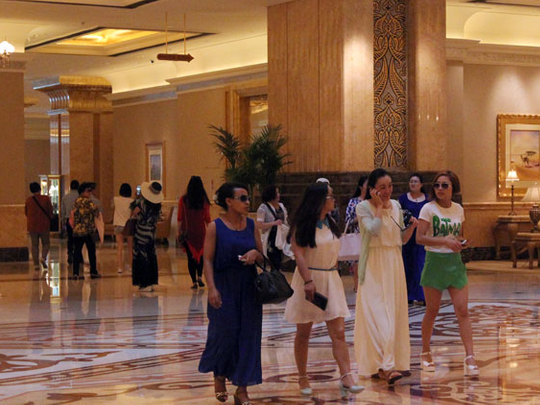
Dubai: Hotels in Abu Dhabi saw occupancy surge to 84.6 per cent in April, driven by strong demand from international and corporate travellers, according to the latest HotStats report published by TRI Hospitality Consulting.
“Abu Dhabi’s strong hotel performance in April was driven by a consistent rise in visitor numbers that boosted demand for rooms and food and beverage activity,” said Peter Goddard, managing director at TRI Hospitality Consulting in Dubai, in a statement.
He said that the capital saw an increase in tourists from China as it welcomed 14,500 visitors from cosmetics company Nu Skin.
As a result of the strong demand during the month, hoteliers increased yields. Average room rates (ARR) grew by nine per cent to touch $163.32, which resulted in revenue per available room (RevPAR- a benchmark for performance) to climb 18.2 per cent to $138.22.
Total revenue per available room (TRevPAR) was up 14.3 per cent to $295.24, while gross operating profits per available room (GOPPAR) grew by 25.8 per cent to $103.38
Elsewhere in the region, Jeddah’s hotels posted a 2.5 per cent growth in occupancy to 81.4 per cent during the month, while ARR was up 9.3 per cent to $268.59.
While hotel occupancy in Riyadh was up 5.4 per cent to 73 per cent, ARR was down 4.9 per cent to $251.07.
In Kuwait, hotels posted an occupancy of 54.2 per cent, marking a 10 per cent drop due to lower corporate demand. ARR, meanwhile, was slightly up 2.2 per cent.
Hotel occupancy fell eight per cent to 62.5 per cent in Sharm El Sheikh, while ARR was down 13.3 per cent to $44.57.
“Ongoing unrest has heavily impacted Egypt’s travel industry with tourist numbers down 22 per cent during the month of April. The drop was driven by a 20 per cent decline in European source markets which comprise 80 per cent of demand,” Goddard said.











